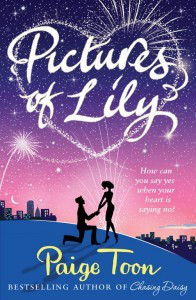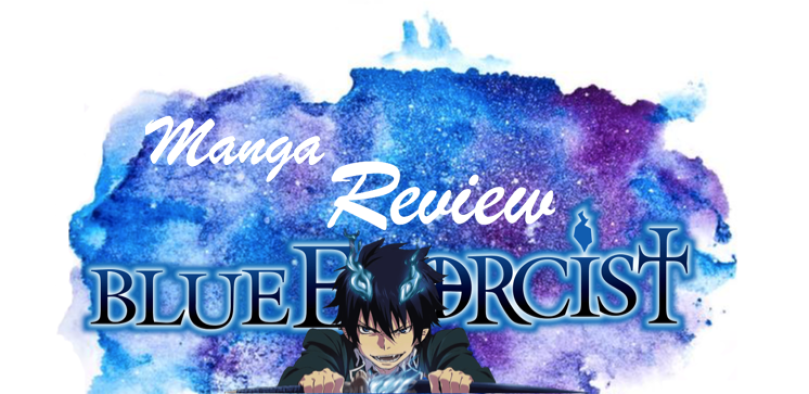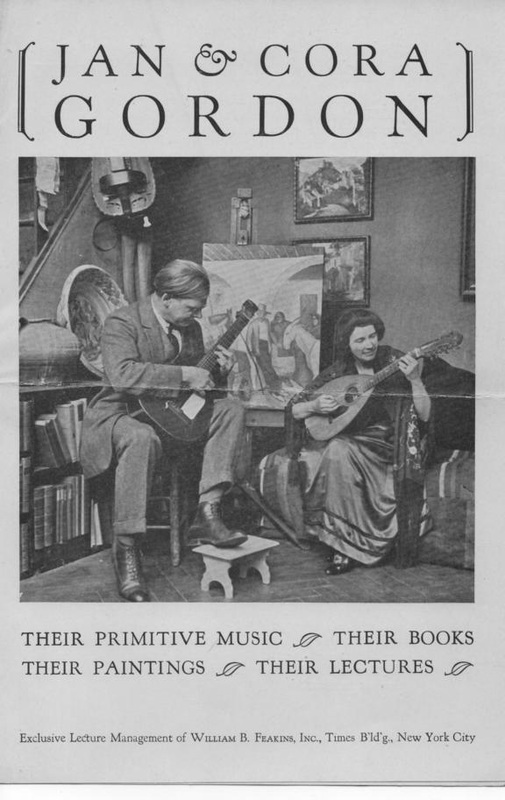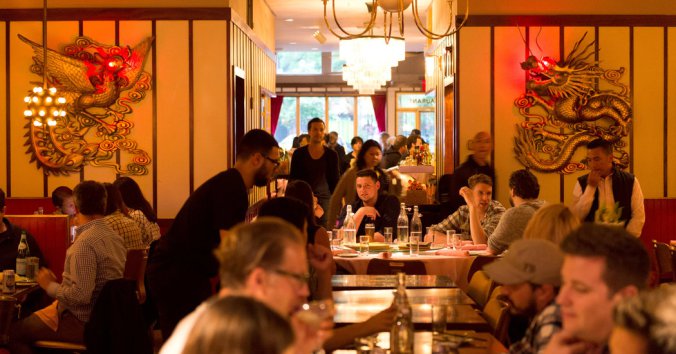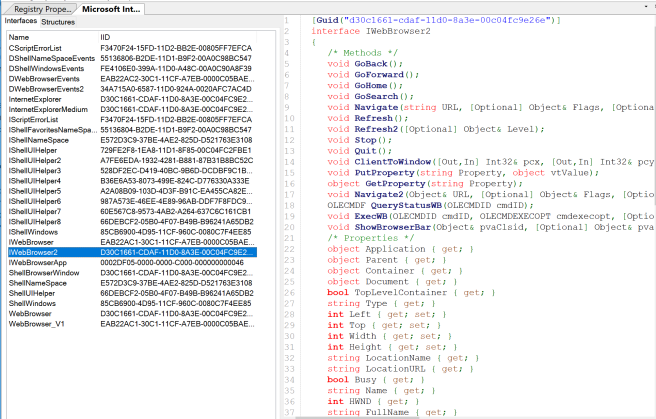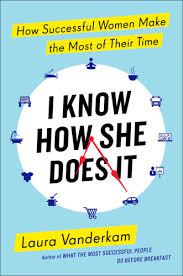by Drew Baumgartner and Spencer Irwin
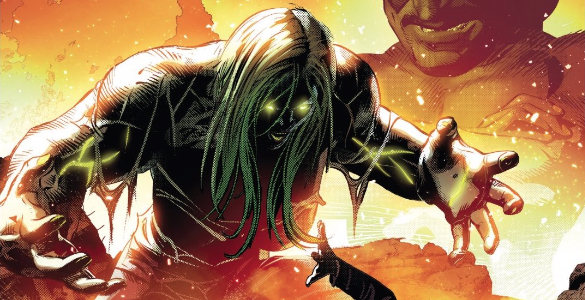
This article containers SPOILERS. If you haven’t read the issue yet, proceed at your own risk!

Drew: Why do we like superheroes? For some, the appeal might be whiz-bang action or modern mythologies, but I’ve personally always been drawn to the genre for its ability to comment on everyday life (albeit by blowing it up to epic proportions). It’s not a feature of every superhero story — far from it — but there’s a certain type of superhero story that manages to scale up relatable conflicts and struggles to matters of life and death. Mariko Tamaki’s work with Jen Waters (formerly on Hulk, now retitled and renumbered as She-Hulk) has always fit into this category with ease, using Jen’s Hulk-outs as a stand-in for PTSD-fueled anxiety attacks. It’s an approach that served the character and the story beautifully, creating a series decidedly unlike any other superhero story on the shelves. This issue is at its best when it focuses on those relatable elements, though the introduction of a bona fide supervillain might just blow the parallels out of the water.
I can understand the appeal of introducing the Leader to the series — he’s a charismatic villain and a classic rogue for the Hulk family; a perfect fit for a Legacy arc — but he’s so unrelated to the more human struggle of Jen coping with her grief, it seems to muddy the through-line of the narrative. Of course, that might be the point. Tamaki kicks off the issue with Jen totally discombobulated, questioning everything about her. It starts off with a “what the heck am I doing here?” kind of gut-check, but then the reality around her starts to come apart a bit. She’s suspicious that the woman she’s met for an interview isn’t who she says she is, and even the food they’re eating is two-faced, combining burgers and cake in an unholy amalgamation. Then again, even Robyn (that suspicious interviewer) might not have a great handle on reality. Check out her response as Jen balks at one of her questions:
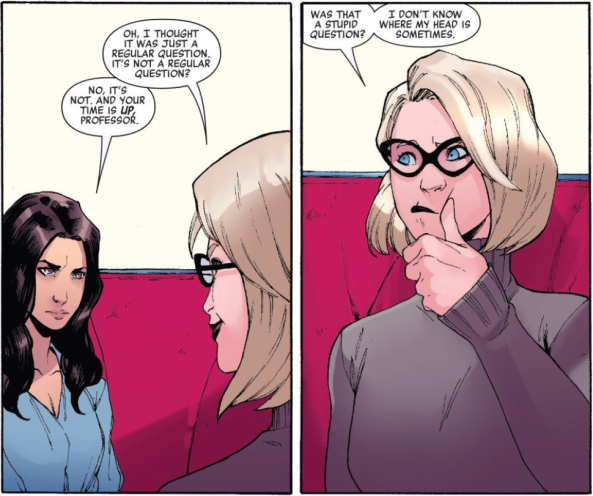
What is going on here? Robyn is ostensibly conducting research, but she also seems to be remarkably scatterbrained — she doesn’t recognize dumb questions, can’t remember where she got the recommendation for this restaurant, and refers to herself as a “bubble brain.” This all could speak to her motives later in the issue, but in the midst of this scene, it’s hard to feel anything but confusion.
Once Jen is captured by — surprise — Robyn, the story gets a bit more interesting. Instead of being some kind of disorganized professor, we start to see her as a stalker/fan.
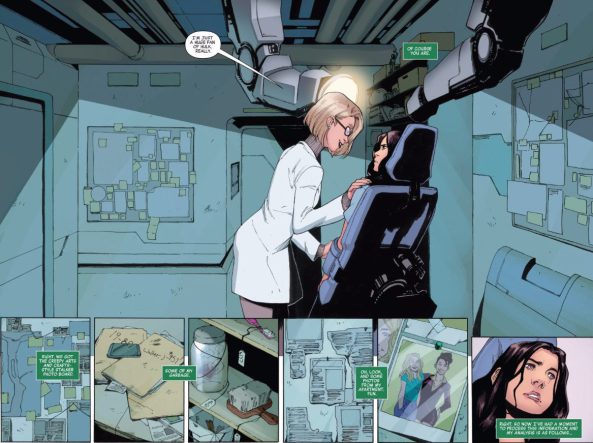
In retrospect, we can read her awkward questions as the awkwardness when a fan meets a celebrity (or, you know, comics creator), attempting to keep the conversation going with questions that range from inane and obvious (“what’s your favorite color?”) to way too personal. Suddenly, that weird conversation from the start of the issue has context that ties it back to some recognizable bit of reality.
A stalker villain is such a brilliant foil for this series, since it seems to ride the line between fan and out-and-out villain. We can understand her interest in Jen as growing out of an unhealthy fixation, which walks us right up to the line of wanting to be Jen. Only, that’s where the Leader comes in. Again, I understand the desire to use him — he’s a great character — but that Robyn’s actions serves some kind of master plan muddies her arc a bit. Conflict coming from a dangerously overzealous fan feels like this series — that fan’s zealousness being weaponized loses some of that grounding.
Spencer, I can feel my reading not quite holding together — the Leader operating as some kind of malevolent anti-conscience certainly can work — so I’m curious to hear if you disagree. Also, I completely neglected to mention Jahnoy Lindsay’s artwork — this is a very talk-y issue, but Lindsay manages to maintain visual interest in spite of all of the talking heads. Did you have any sequences you felt were particularly notable?

Spencer: I don’t know if this is necessarily the sort of sequence you were referring to, Drew, but my favorite visual moment of the issue is simply when we finally get to see Jen and the Leader side-by-side.
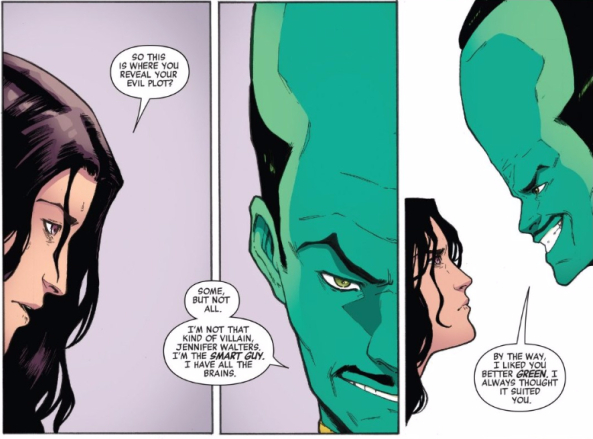
Throughout the rest of the issue Lindsay generally uses smaller, square panels for close-ups, headshots, and conversations like this one — rectangular panels, like the ones seen here, instead tend to include characters’ bodies as well. Here, though, Lindsay has to use rectangular panels just to fit the Leader’s head into the shot — and even then, not all of it! Even if it doesn’t end up revealing much about either character, it certainly makes for an amusing and memorable image, and as Drew mentioned, that helps keep a rather talky issue feeling interesting and visually stimulating.
There’s a few more tricks Lindsay and Tamaki pull that help in this regard. For starters, they vary their settings, taking Jen to multiple locations across the city throughout the issue. She doesn’t just talk to Robyn or Hellcat — she talks to them at a restaurant and as she strolls through the city, buying ice cream. Lindsay gets a chance to shine a spotlight on some of the citizens who cross Jen’s path, and even gives us a page focused on Hellcat’s location and perspective to shake things up.
Lindsay’s facial expressions are also a great boon. It feels counter to my prior points to say this, but some of my favorite moments of the issue are the ones where Jen is just having an intense conversation, and Lindsay drops backgrounds, zooms in on his characters, and let their faces sell the scene.
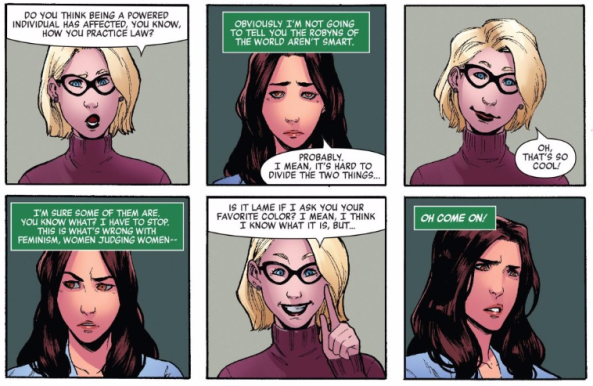
I wouldn’t necessarily call Lindsay’s faces heavily detailed or realistic, but they convey emotion very well. Robyn comes across as a little high-strung and unusual just from her appearance alone (I can’t quite pinpoint why, but it’s got to be intentional), and Jen’s annoyance rings through loud and clear, especially in that second panel, where it looks like her soul wants to flee her body. When there’s so much character in Lindsay’s characters, it keeps conversation and even exposition from ever being a bore.
When it comes to this issue’s plot, I’ve got similar feelings to Drew. On my first read, I spent a significant amount of time feeling disoriented and confused. Eventually, of course, the story became much clearer, and I can appreciate how intentionally disorienting Tamaki made things (she opens the issue with Jen barely knowing where she is or why, throwing readers into the same boat), but there’s a few small moments where it was too much for me. For example, I’m not sure what the significance of Hellcat’s maybe-or-maybe-not bank robbers is. I have no idea what she’s referring to, so unless they come into play later in this arc, they’re essentially a non sequitur that are not only distracting in their own right, but undermine the more deliberately jarring moments that do have explanations.
I’m also just slightly concerned about the Leader, who so far seems to be the less interesting of Jen’s two opponents. Hopefully he’s just there to provide means for Robyn to pursue her plans, and it’s way too early to criticize his inclusion too much, but Robyn’s line that her dream is “a dream [she] didn’t even know [she] had” does imply some manipulation or coercion on Leader’s part that has me ever so slightly worried. Still, there’s plenty of ways that Tamaki can spin that aspect of the story into a compelling plot. It’s not a major issue.
While it’s never outright stated, I actually love the core of this issue: that Robyn wants to be like Jen, and like the Hulk, likely by becoming a Hulk herself.

What is it about Jen that Robyn admires? It’s interesting — She-Hulk was originally designed as a bit of an aspirational character, at least in the sense that becoming She-Hulk helped Jennifer Walters find her confidence, and probably helped some readers do the same. Robyn definitely strikes me as someone who would want to steal away some of that composure and confidence for herself, but Robyn is also a fan of Jen’s current Hulk form (she’s closely following her exploits at the courthouse, for example). What could she possibly admire about that?! Power? The ability to lash out at people who hurt her? It’s certainly nothing good.
We’re knocking up against this issue’s main thematic conflict here — Robyn wants to be like Jen because she can only see the upsides of this new Hulk, while Jen is still struggling with who she’s become because she can only see the downsides of her new form. It’s a clear-cut and compelling conflict, and one that opens up a natural next step in Jen’s ongoing journey of trauma and recovery. I may have some minor quibbles with this issue, but deep down it’s got a rock solid foundation. Hopefully that means good things for the rest of this arc.

For a complete list of what we’re reading, head on over to our Pull List page. Whenever possible, buy your comics from your local mom and pop comic bookstore. If you want to rock digital copies, head on over to Comixology and download issues there. There’s no need to pirate, right?
Advertisements Share this: